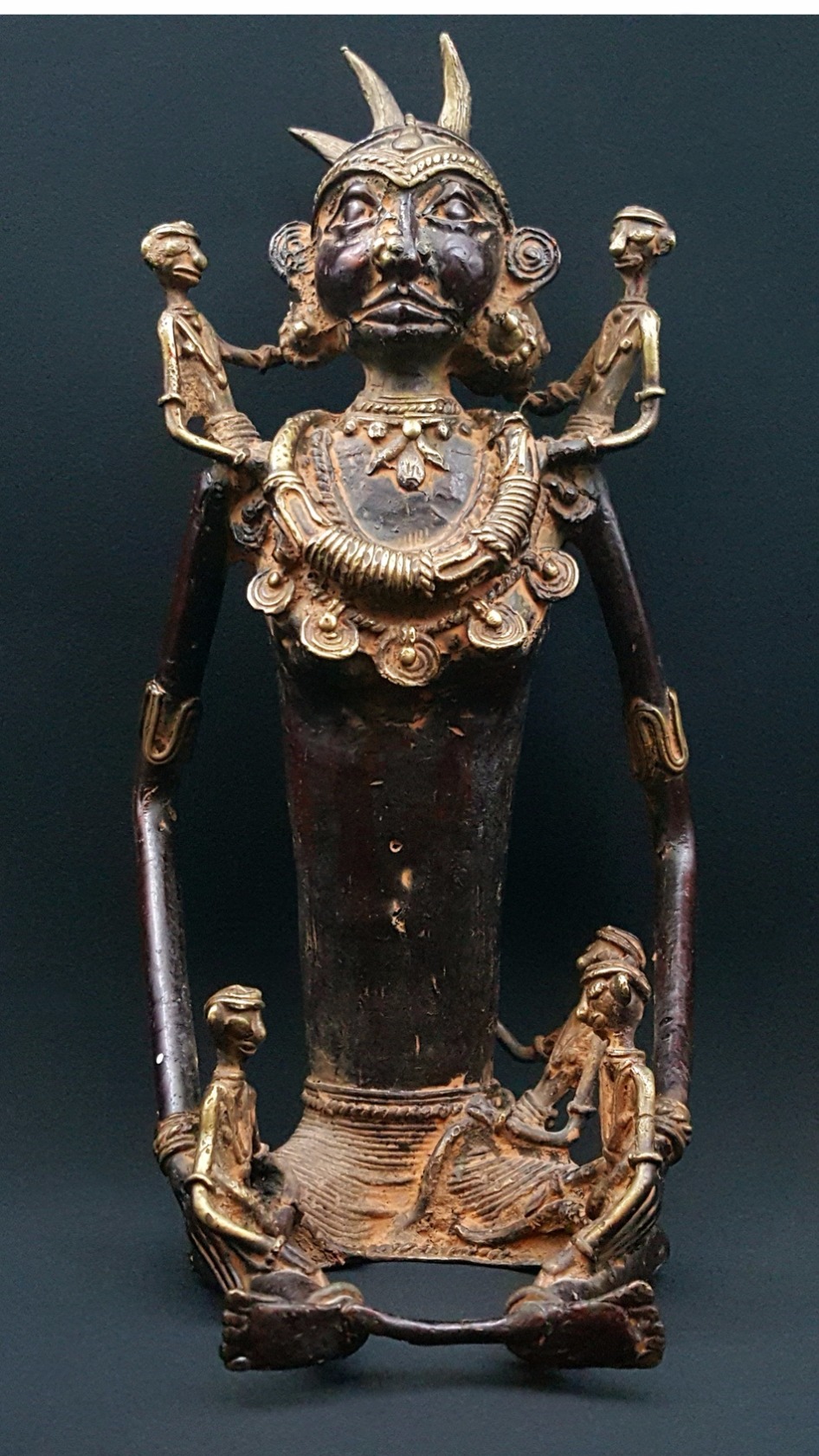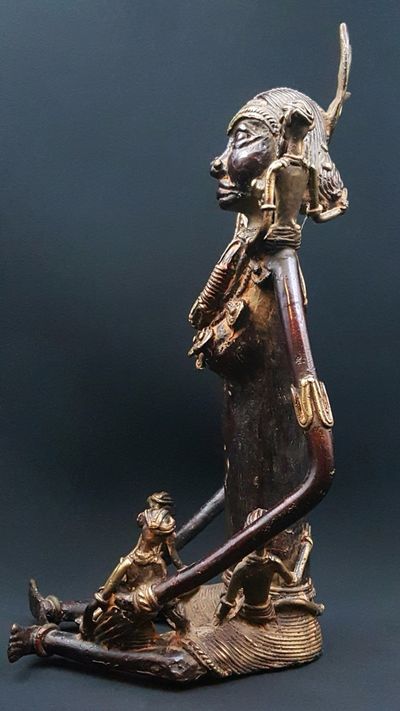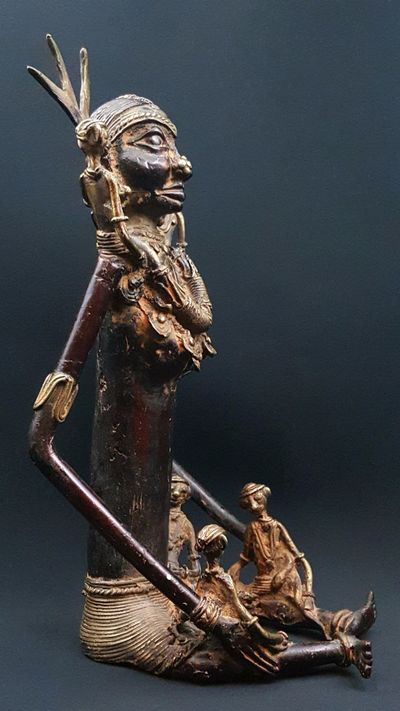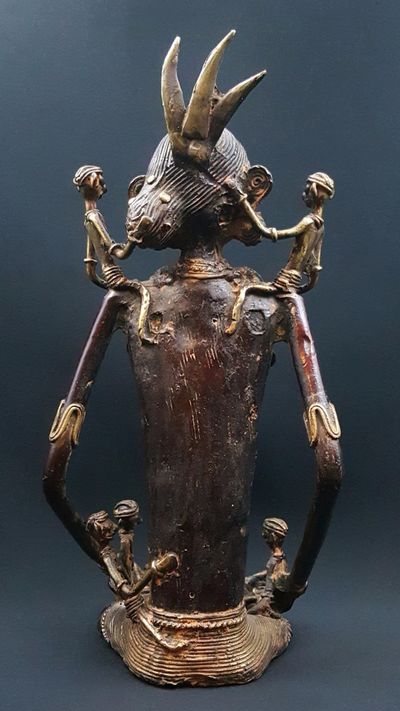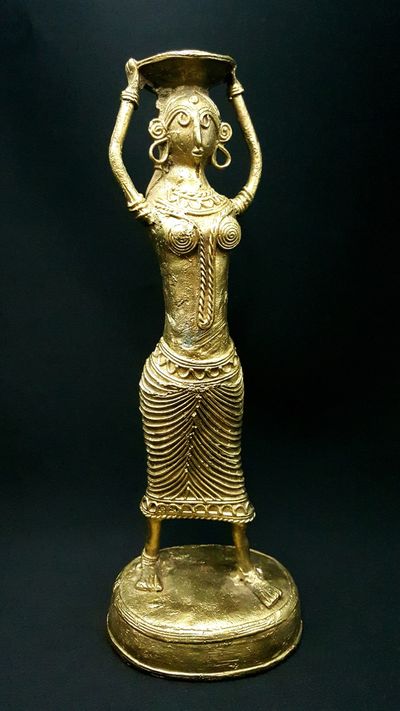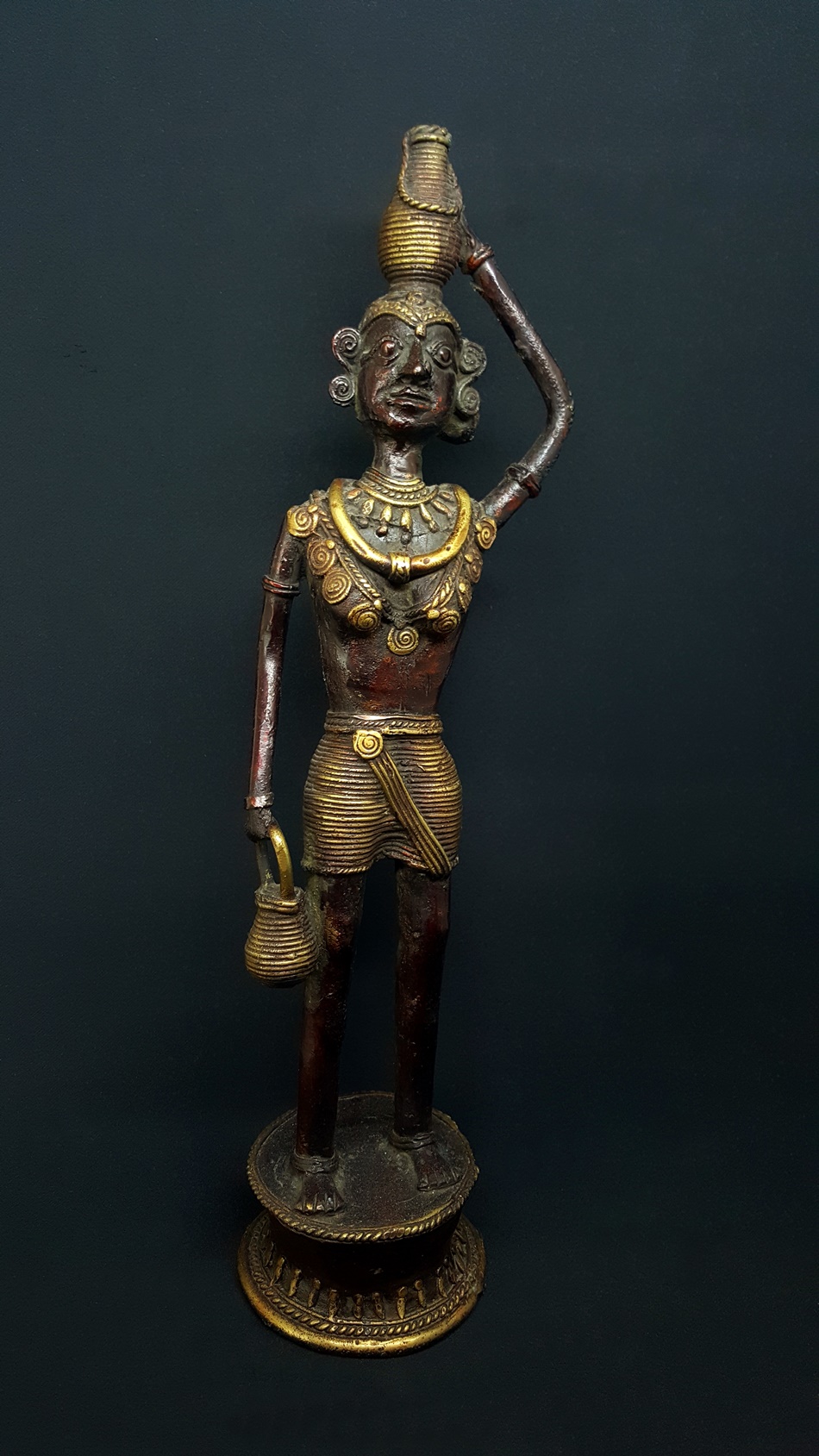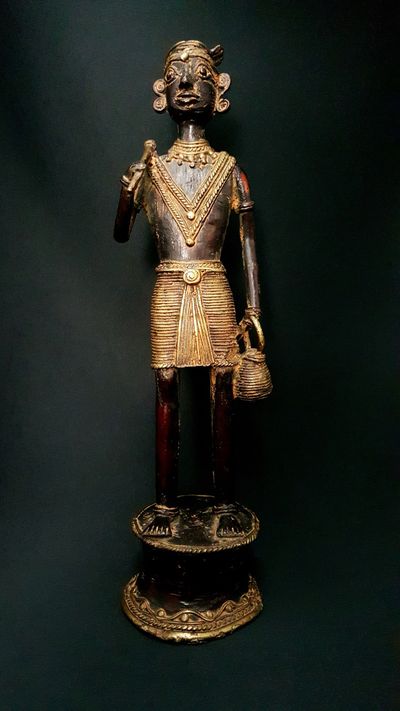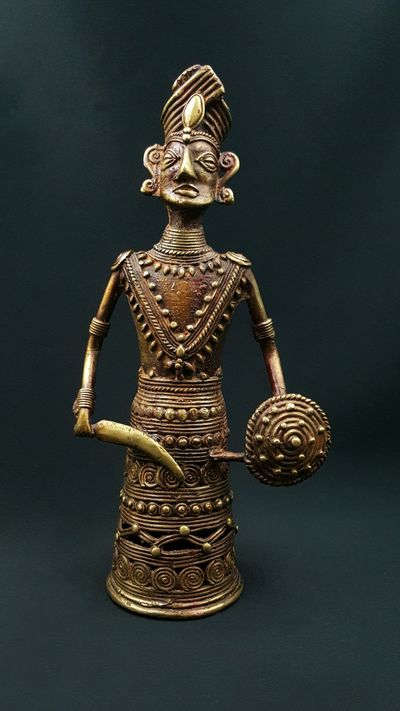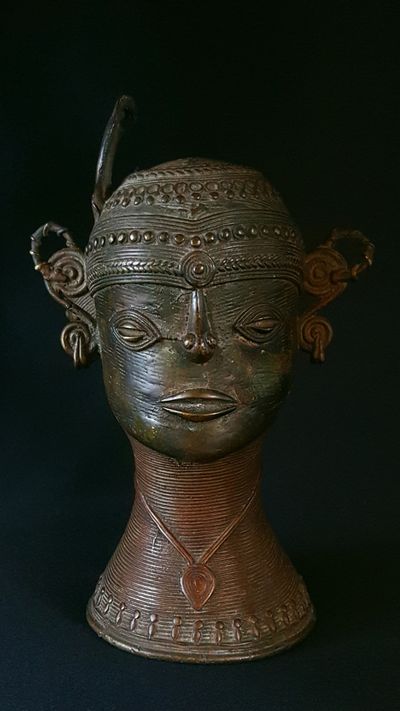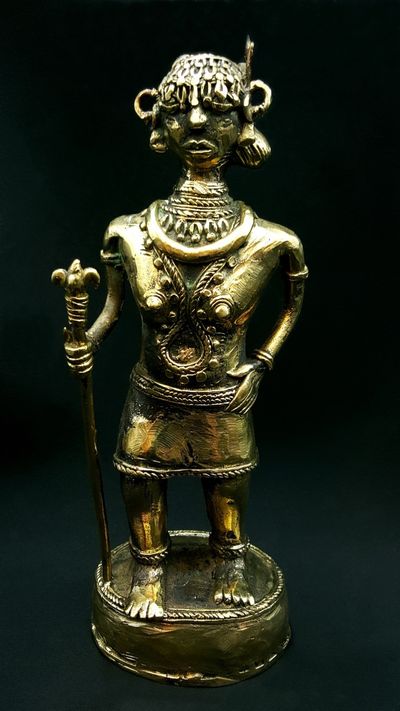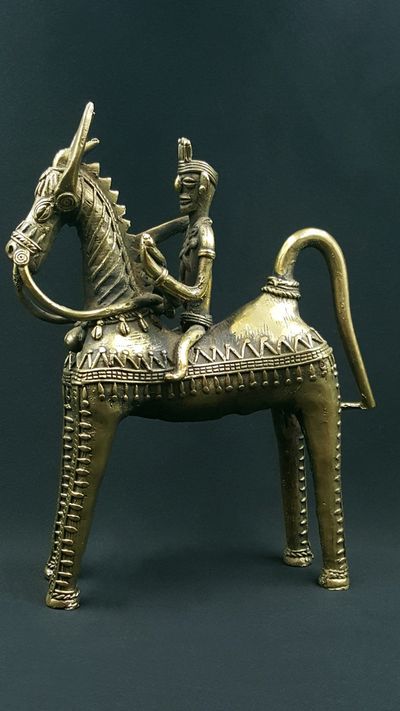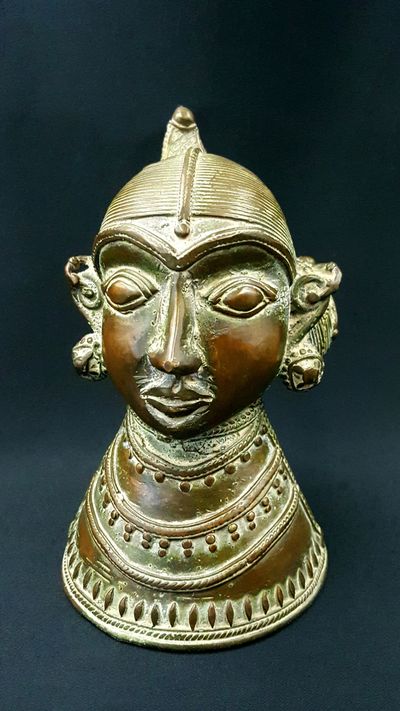Statue Femme Bastar avec ses enfants
La fertilité
€390.00
Richesse des parures tribales, importance de la famille, de la fécondité et un style très épuré : la force évocatrice de cette statue est directe et puissante. En savoir plus...
Hauteur : 28 cm
Poids : 2,3 Kg
Art tribal
Technique de la cire perdue - Alliage cuivreux
Origine : Chattisgarh - Inde
Livraison gratuite UE, Norvège et Suisse
Description
Les Bastars
Le Bastar est un district de l'Inde du Sud dans l'État de Chattisgarh, il fût un royaume indépendant du 14ème siècle jusqu'à son intégration à l'Inde en 1948.
La population tribale représente 70% de la population du district de Bastar: les principales tribus sont les Gonds - les Abhuj Maria et les Bhatras. La plupart ont gardé leur tradition (art culinaire, vestimentaire, fêtes...) et leur religion animiste.
Les tribus vivent encore principalement de l'agriculture et des ressources tirées de la forêt (chasse, plantes médicinales, bois...).
Certaines tribus se consacrent à la fabrication des statues en laiton depuis plus de 4000 ans. Cet art, que l'on retrouve aussi dans les États du Madhya Pradesh, de l'Odisha, dans l'Ouest Bengal, du Bihar... est appelé Dokra.
L'art Dokra : un savoir millénaire dans la fabrication des statues en laiton
Cet art tribal indien artisanal n'a pas changé depuis des millénaires (+ de 4000 ans) et la technique utilisée est toujours celle de la cire perdue : un modèle grossier en argile est réalisé puis recouvert de cire par l'artiste qui va lui donner sa forme définitive avec ses détails. L'ensemble est à nouveau recouvert d'un mélange argileux puis chauffé dans un foyer ouvert où un alliage cuivreux sera coulé. voir Blog.
Les objets produits par les artistes Dokra peuvent être de nature usuels : coupelle, bougeoir... des instruments de musiques (cuivres), ou bien artistiques tels que des bijoux, des animaux : chevaux, éléphants, tortues..., des statues d'hommes et femmes représentant des scènes de vies quotidiennes et des divinités hindous adoptées par les tribus : Ganesh, Lakshmi, ...
Posture Assise portant ses 5 enfants dans une posture symbolisant la dignité et la fertilité. Le regard est lointain, le buste très droit et disproportionné par rapport aux jambes donne à cette femme une présence importante. Les cinq enfants tous de même taille, semblent tout petits. La mère donne une impression de force et de sécurité.
Bijoux Impressionnante coiffe typique des tribus du Bastar, traditionnellement fait de plumes. Deux colliers : un large traditionnellement en argent et un autre fait de pièces au ras du cou. Un bandeau frontal traditionnellement orné de coquillages. Plusieurs boucles dans les oreilles et le nez.
